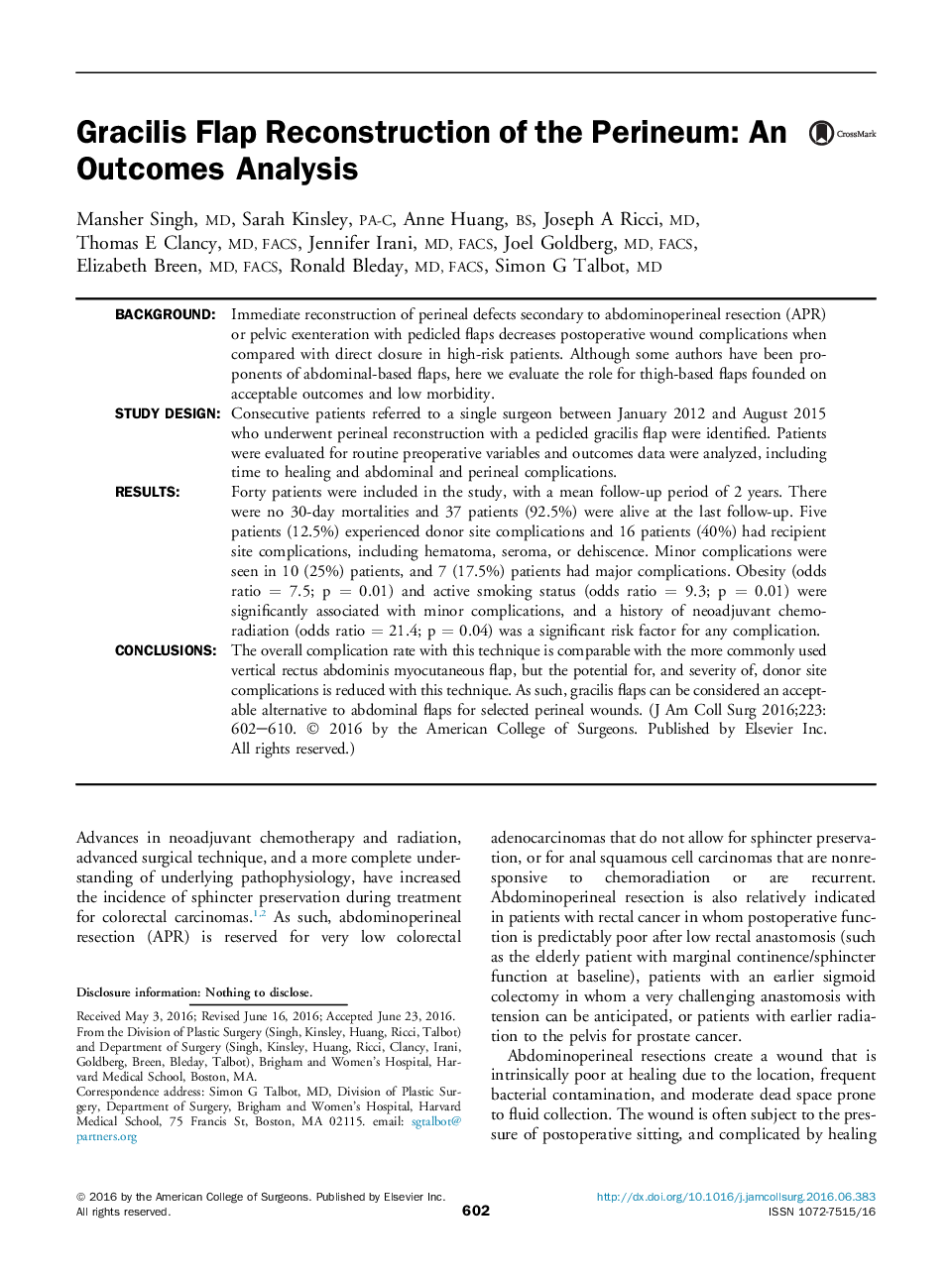| Article ID | Journal | Published Year | Pages | File Type |
|---|---|---|---|---|
| 4290462 | Journal of the American College of Surgeons | 2016 | 9 Pages |
BackgroundImmediate reconstruction of perineal defects secondary to abdominoperineal resection (APR) or pelvic exenteration with pedicled flaps decreases postoperative wound complications when compared with direct closure in high-risk patients. Although some authors have been proponents of abdominal-based flaps, here we evaluate the role for thigh-based flaps founded on acceptable outcomes and low morbidity.Study DesignConsecutive patients referred to a single surgeon between January 2012 and August 2015 who underwent perineal reconstruction with a pedicled gracilis flap were identified. Patients were evaluated for routine preoperative variables and outcomes data were analyzed, including time to healing and abdominal and perineal complications.ResultsForty patients were included in the study, with a mean follow-up period of 2 years. There were no 30-day mortalities and 37 patients (92.5%) were alive at the last follow-up. Five patients (12.5%) experienced donor site complications and 16 patients (40%) had recipient site complications, including hematoma, seroma, or dehiscence. Minor complications were seen in 10 (25%) patients, and 7 (17.5%) patients had major complications. Obesity (odds ratio = 7.5; p = 0.01) and active smoking status (odds ratio = 9.3; p = 0.01) were significantly associated with minor complications, and a history of neoadjuvant chemoradiation (odds ratio = 21.4; p = 0.04) was a significant risk factor for any complication.ConclusionsThe overall complication rate with this technique is comparable with the more commonly used vertical rectus abdominis myocutaneous flap, but the potential for, and severity of, donor site complications is reduced with this technique. As such, gracilis flaps can be considered an acceptable alternative to abdominal flaps for selected perineal wounds.
